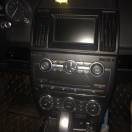
特别提醒:我们的最终目标是帮助孩子利用英语学习数理化,考入理想的大学。重点冲刺科大少年班(基本条件:16周岁前参加高考)和国外著名大学。
请家长朋友牢记:现代英语60%以上的单词有拉丁语和希腊语根源。在科学上,90%以上的单词源自拉丁语和希腊语。
从根本上说,真正解决英语、法语、德语、意大利语、西班牙语单词问题的最基本任务是认识几百个拉丁语和希腊语的常用构词部件(相当于汉语中的偏旁部首)。
请家长朋友一定要让孩子尽量多听母语者的发音,特别是母语者演唱的歌曲。
想通过英语学习科技知识,越早认识希腊字母越好。
在继续本课程之前,请先阅读《小学生同步玩转英语拉丁语希腊语发音》。
特别提醒:本教程在电脑大屏幕上观看效果最佳。
首先,我们假设您已经掌握英语表示1~10的数字。
现在我们学习英语表“百”和“千”的单词。
【英语】hundred[ˈhʌndrəd]adj., n., pron. -dred 或 -dreds 100, 百个
a hundred cows 100头奶牛
two hundred cows两百头奶牛
Hundreds of people attended the famous director's farewell concert.好几百人出席了这位著名指挥家的告别音乐会。
拆解:hund+red。
请家长朋友大概了解词源:From Middle English hundred, from Old English hundred, from Proto-Germanic *hundaradą, from *hundą (from Proto-Indo-European *ḱm̥tóm) + *radą (“count”), a neuter variant of *radō (“row, line, series”).. Compare West Frisian hûndert, Dutch honderd, Low German hunnert, hunnerd, German Hundert, Danish hundred.
重点了解:hund-表“百”,和拉丁语的centum,古爱尔兰语cét,立陶宛语šimtas,梵语शत (śatá)一样,都源自PIE(原始印欧语)*ḱm̥tóm。
只要您愿意,可以顺便熟悉一下德语的hundert(百)。
【德语】hundert(国际音标/ˈhʊndɐt/) adj. 一百。
拆解:hund+ert。
区别在:英语是在hund-后面加-red,而德语加-ert。
强烈建议您尽量多了解几门语言,争取成为熟练掌握多种语言的理科博士。
请大概了解:英语表“世纪”的单词century中的cent-是拉丁语表“百”的词根。
【英语】century[ˈsentʃərɪ]n. -ries1. 世纪;百年
It was built in the 19th century.它是19世纪建造的。
2. 一世纪;一百年
拆解:cent+ury。
词源:From Middle English centurie (“a count of one hundred (of anything); a division of the Roman army; century; a division of land”), from Old French centurie, from Latin centuria, from centum (“one hundred”). The most common modern use is a shortening of century of years.
事实上,“世纪”和“百年”都是汉语的演绎。学习英语就不用区分这些细节。
英语表“百分之~”的单词percent同样用到拉丁语表“百”的词根cent-。
【英语】percent[pəˈsent]adv. 每百中;百分之…
I am 100 percent in agreement.我百分之百同意。
n. percent 百分之…,百分点
seven percent百分之七
‘Sixty percent of the pupils are boys’ means that of every hundred pupils, sixty are boys. “
百分之六十的学生是男孩”是指每100个学生中,有60个是男孩。
拆解:per+cent。
词源:From New Latin per centum (“by the hundred”).
请大概了解:Latin在拉丁语、意大利语、西班牙语中的读音和汉语的“拉丁”基本上是一样的。
在希腊语源的单词中,表“百”的词根是hect-。
如hectometer(厘米),hectowatt(百瓦),hectoliter(百公升),hectogram(一百公克)。
【英语】hectare[ˈhektɑː]n. 公顷(面积的单位,=1万平方米, =100 公亩或 2.471 英亩, 合15 市亩)
拆解:hect+are(拉丁语表“面积”的area的词根)。
词源:Borrowed from French hectare, formed from Ancient Greek ἑκατόν (hekatón, “hundred”) + are.
请家长朋友记重点:源自拉丁语的cent-,对应源自希腊语的hect-,对应英语、德语的hund-。
下面,我们学习英语表“千”的单词thousand。
【英语】 thousand[ˈθaʊzənd]adj., n., pron. -sand 或 -sands 一千;千个
拆解:thous+and。
重点注意:thou-读[θaʊ],也就是th读[θ],ou读[aʊ]。
字面意思是:比“百”更大的数。
词源:From Middle English thousend, thusand, from Old English þūsend (“thousand”), from Proto-West Germanic *þūsundi, from Proto-Germanic *þūsundī (“thousand”), (compare Scots thousand (“thousand”), Saterland Frisian duusend (“thousand”), West Frisian tûzen (“thousand”), Dutch duizend (“thousand”), German tausend (“thousand”), Danish tusind (“thousand”), Swedish tusen (“thousand”), Norwegian tusen (“thousand”), Icelandic þúsund (“thousand”), Faroese túsund (“thousand”)), from Proto-Indo-European *tuHsont-, *tuHsenti- (compare Lithuanian tūkstantis (“thousand”), Polish tysiąc, Russian ты́сяча (týsjača)).
Possibly from *tewh₂- (“to swell”). According to Kroonen, the root should be reconstructed as *tuh₂sḱmto-, compounded from a prefix *tuh₂s- (from *tewh₂-) and *ḱm̥tóm (“hundred”).
建议顺便熟悉一下德语的相应单词tausend。
【德语】tausend(国际音标/ˈtaʊ̯zn̩t/, /ˈtaʊ̯zənt/) (num) ① 一千 ② 很多,无数。
拆解:taus+end。
我们可以大概了解:英语的th,对应德语的t。英语中的ou通常读[aʊ](接近汉语拼音的ao),而在德语中一般直接写成au。
请家长朋友记重点:英语中日耳曼语源单词中最大的数是“千”。英语和汉语“万”对应的表达方式是“ten thousand”,相应的德语单词是“zehntausend”。
【德语】zehntausend(国际音标/ˈt͡seːnˌtaʊ̯zn̩t/) adj. 一万。10000。10k
拆解:zehn+tuasend。
认识德语表“千”的单词tausend,就很容易理解,德语其实也没有表“万”的单词。
德语是和英语一样的,用“十千”表“一万”。
【德语】Zehn(国际音标/t͡seːn/) [die] 十。10。
注:德语中,在元音后加上h表“长元音”,所以,德语中的eh读[e:],对应古典拉丁语和古英语的长元音ē。
请家长朋友大概了解:德语属于高地德语,而英语、荷兰语属于低地德语。德语经历日耳曼语第二次辅音变化,把原始日耳曼语的*t变化为z(读汉语拼音的c),在元音后变化为ss(读[s])。
比较英语的ten(十)和德语的Zehn(十),就很容易理解英语的two(二),对应德语的Zwei(二)。
英语中,表“二”和“十”的单词以t开头,在德语中变化为z,对应拉丁语的d。
这就是说,拉丁语表“二”的词根应该是以d开头。
【英语】duet[djuːˈet; (US) duːˈet]n. 二重唱;二重奏
拆解:du+et。
du-是拉丁语表“二”的词根。
【英语】dual ['djuːəl]adj. 两的, 双的; 双重的; 双倍的
拆解:du+al。
【英语】decade['dekeɪd]n. 十年; 十
拆解:dec+ade。
【英语】December[dɪˈsembə(r)]n. 十二月
拆解:decem+ber。
decem在拉丁语表“十”。
【英语】decimal['desɪml]n. 小数adj. 十进位的, 小数的
拆解:decim+al。
这里的decim-是拉丁语表“十”的单词decem的读音变化。


前面介绍了:英语中日耳曼语源单词中最大的数是“千”。
这是因为,PIE(原始印欧语)中最大的数字是千。
所以,表示比“千”更大的数字,就需要重新造词。
英语受古法语的影响,采用源自意大利语的million表“百万(千千,大千)”。
【英语】million[ˈmɪlɪən]adj., n., pron. million 或 millions 百万
Millions of hamburgers and French fries are eaten every year.每年美国人要吃掉几百万个汉堡包和法国油煎饼。
Millions of words have been written about young people in the United Stated.关于美国的年青人已经有人写过许多书了。
拆解:mil+l+ion。
【法语】million(国际音标)n.m. 百万,百万法郎、百万元或百万镑等,巨大数目,许许多多,无数
拆解:mil+l+ion。
在法语中,-ion是指小后缀。这明显不符合逻辑。
所以,一定要了解词源:
From Old French, from Italian milione (“million”), from mille (“thousand”) (from Latin mille) + the augmentative suffix -one. Compare -illion.
我们可以大概了解:英语、法语表“百万”的单词million经由古法语源自意大利语milione (“million”)。在意大利语中,-one是指大后缀。
这就是说,意大利语的milione(国际音标/miˈljo.ne/)是表“千”单词mille的指大词——通过增加指大后缀构成的词。
意大利语、法语中,位于其它元音前的i通常读[j]。
而意大利语表“千”的单词mille源自拉丁语的miles。
英语表“英里”的单词mile,源自拉丁语的miles,字面意思是“一千步”。
【英语】mile[maɪl]n.1. 英里
The woman knew that the nearest village was miles away.
这位妇女知道,即使最近的村庄也在数英里之外。
He has a 10-mile drive each day to and from his work.
他每天上下班驱车十英里。
2. 很长的路;非常大的距离
to miss the target a mile远远没有击中目标
拆解:mil+e。
词源:From Middle English myle, mile, from Old English mīl, from Proto-West Germanic *mīliju, a borrowing of Latin mīlia, mīllia, plural of mīle, mīlle (“mile”) (literally ‘thousand’ but used as a short form of mīlle passūs (“a thousand paces”)).
到这里,我们再重新看国际标准计量单位,就会发现问题一下子变得十分简单。与此同时,也就会发现用英语原版教材学习数理化和生物医学真的也很简单。


现在有很多的家长在花钱、花时间请人帮助折磨自己的孩子。
当您稍微花点精力大概了解一些人类语言发展的基本常识,就会发现这是非常愚蠢的行为。
